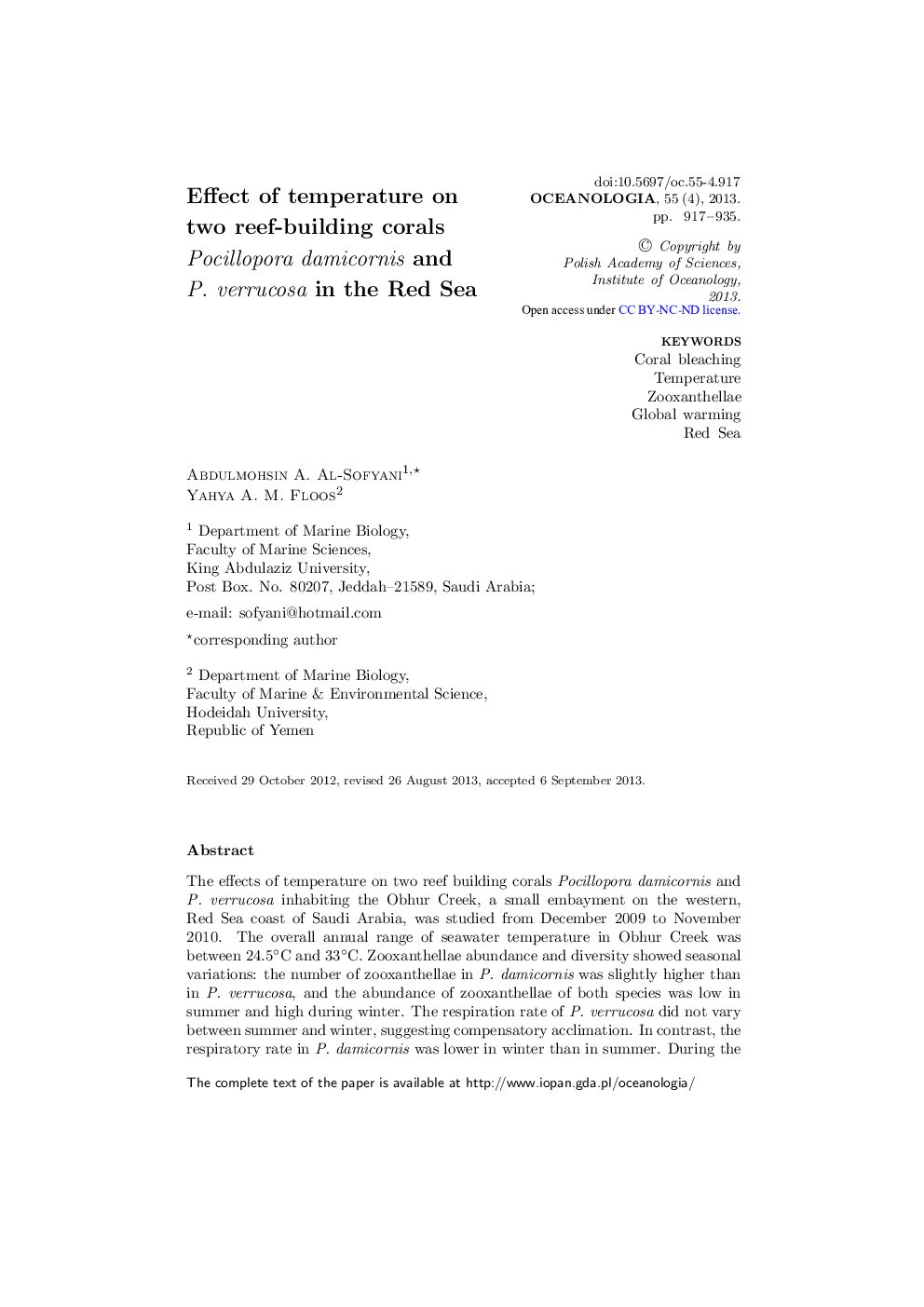| Article ID | Journal | Published Year | Pages | File Type |
|---|---|---|---|---|
| 2069789 | Oceanologia | 2013 | 19 Pages |
The effects of temperature on two reef building corals Pocillopora damicornis and P. verrucosa inhabiting the Obhur Creek, a small embayment on the western, Red Sea coast of Saudi Arabia, was studied from December 2009 to November 2010. The overall annual range of seawater temperature in Obhur Creek was between 24.5°C and 33°C. Zooxanthellae abundance and diversity showed seasonal variations: the number of zooxanthellae in P. damicornis was slightly higher than in P. verrucosa, and the abundance of zooxanthellae of both species was low in summer and high during winter. The respiration rate of P. verrucosa did not vary between summer and winter, suggesting compensatory acclimation. In contrast, the respiratory rate in P. damicornis was lower in winter than in summer. During the winter season the metabolic rate was higher in both species owing to the optimum seawater temperature (30°C). As a result of the abundance of zooxanthellae and the optimum seawater temperature, the growth rates of the skeletons of the two coral species were higher in winter and lower in summer. In general, the results showed that P. verrucosa is more flexible with respect to temperature than P. damicornis. The difference in zooxanthellae thermal tolerances at 35°C may be due to the algal genotypes between the two species, resulting in P. damicornis becoming bleached as the rate of metabolism exceeds the rate of photosynthesis with increasing temperature.
